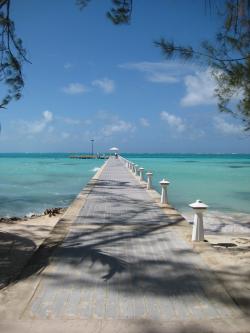jks
About
- Username
- jks
- Joined
- Visits
- 36,744
- Last Active
- Roles
- Member, Administrator, Moderator
- Points
- 670
Reactions
-
Two deaths in the family
Both issues, "cable brownout" and lab-grade power supply voltage drop due to current limiting, have happened to me personally and were totally unexpected at the time. That's why they are documented: http://kiwisdr.com/quickstart/index.html#id-power
-
KiwiSDR production status and availability
Generally out-of-stock now except for a few here and there and some board-only versions at Mouser. But telemetry reports 75 Kiwis are in final test at Seeed. So more on the way.
@KB8DOA: I have emailed Seeed asking why RS didn't (apparently) receive their order of 5 units from the last build. I can't understand why that situation is so screwed up.
-
Kiwi with 2m converter/switch added
Today's v1.427 release adds a "frequency scale offset" field for each antenna on the admin page, extensions tab, "Antenna switch" entry. After updating to v1.427 you must also install the latest version of the antenna switch extension from github.com/jks-prv/KiwiSDR-antenna-switch-extension
When any antenna is selected the new offset values will be used and completely override (and overwrite) the offset value from the admin page config tab. A value of zero means no offset, so the usual frequency scale of 0 - 30 (or 32) MHz.
Any active user connections will get a popup panel requesting a page reload when the offset changes. No offset change is made when "antenna mixing" is enabled because it isn't clear what to do in that case.
-
Early demonstration of "channel nulling"
From the CHANGE_LOG file. The user interface is definitely rough, but at least you can give channel nulling a try in this update.
To null, use SAM mode and select the "audio" tab on the main control panel. On the bottom SAM line you should find the "channel null" menu. Select "null LSB" or "null USB". Make sure the PLL carrier is around 0 Hz (+/- 100 Hz maybe). If it's way off then make sure you're tuned to the station center frequency, switch to AM mode briefly, then back to SAM. The PLL should lock.
Use the spectrum function of the new "FFT" extension to visualize the nulling result. It's best to put the spectrum/waterfall aperture mode on manual so the spectrum doesn't rescale on you when the signal is nulling. You can enable the peak detect ("Pk" button) on the WF tab to see the difference. Because the nulling is happening in the audio path the regular waterfall and spectrum signal levels are not effected. Same for the S-meter. And currently same for the FFT and integrate modes of the FFT extension, although this might change.
v1.425 November 26, 2020
Channel nulling, preliminary release
See forum post: http://forum.kiwisdr.com/discussion/2169/early-demonstration-of-channel-nulling#p1
Audio FFT extension:
Rename and expansion of former "integrate" extension.
Adds continuous audio FFT and audio spectrum modes to existing integration mode.
The audio spectrum function is particularly useful in visualizing the effectiveness
of the new channel nulling feature of SAM mode.
Admin security tab: added option to enable/disable console tab access from the local
network. This in response to a few Kiwis that still have trouble determining
their local network address, e.g. when using unsupported WiFi dongles.
Prevent open menus from unexpectedly closing when colormap averaging event occurs.
Update embedded URLs pointing to the forum.
-
Early demonstration of "channel nulling"
Here is a very early demonstration of using the Kiwi's synchronous AM detector (SAM) to subtract one sideband from the other. So a strong on-channel signal that is covering up a weaker one (either on-channel or close by) can be attenuated. This is something I'm tentatively calling "channel nulling". There is much work to be done, but this is at least an existence proof.
In the first image there is a local powerhouse on 882 kHz and a much weaker carrier on 880 kHz can just be seen in the RF waterfall (green arrow).
In the second image "null LSB" has been selected from the new menu on the SAM line of the audio tab (bottom right). This puts the SAM detector in "SAL" (synchronous AM LSB) mode such that the USB component is not passed through to the audio. However, just prior to that the USB component is subtracted from the LSB, and, given the sideband symmetry of AM signals, the LSB is effectively nulled (to a varying degree). In the spectrum display above the waterfall you'll note the weak station carrier 2 kHz away now appears above the noise and, sure enough, a Spanish language station can be heard which was impossible previously.
The "spectrum display" in this case is not the usual spectrum data from the RF waterfall but rather a single-sided spectrum of the audio channel (hence symmetry either side of center). Note that an extension called "FFT" has been selected. This is going to be an expansion of the existing "integrate" extension to include more general audio FFT and spectrum capabilities.
The RF waterfall doesn't change between these two images because it is from the RF/IF path and not the demodulated/nulled audio.
This technique is not perfect. Due to the subtraction involved It depends on excellent USB/LSB signal symmetry which can be easily upset by frequency selective fading. A very common problem on shortwave and medium wave at night (at a time when you're most likely to want to use such a feature). But in the presence of fading the nulling effectiveness will vary and it just might give you the chance to "bag a new one" on MW if conditions are right.
As usual, many thanks to Youssef of AirSpy who recently pioneered this idea. A superior implementation is found in SDR# (the "Co-Channel Canceller" https://swling.com/blog/?s=co-channel). Maybe someday I'll understand how he does it (but probably not, lol).












